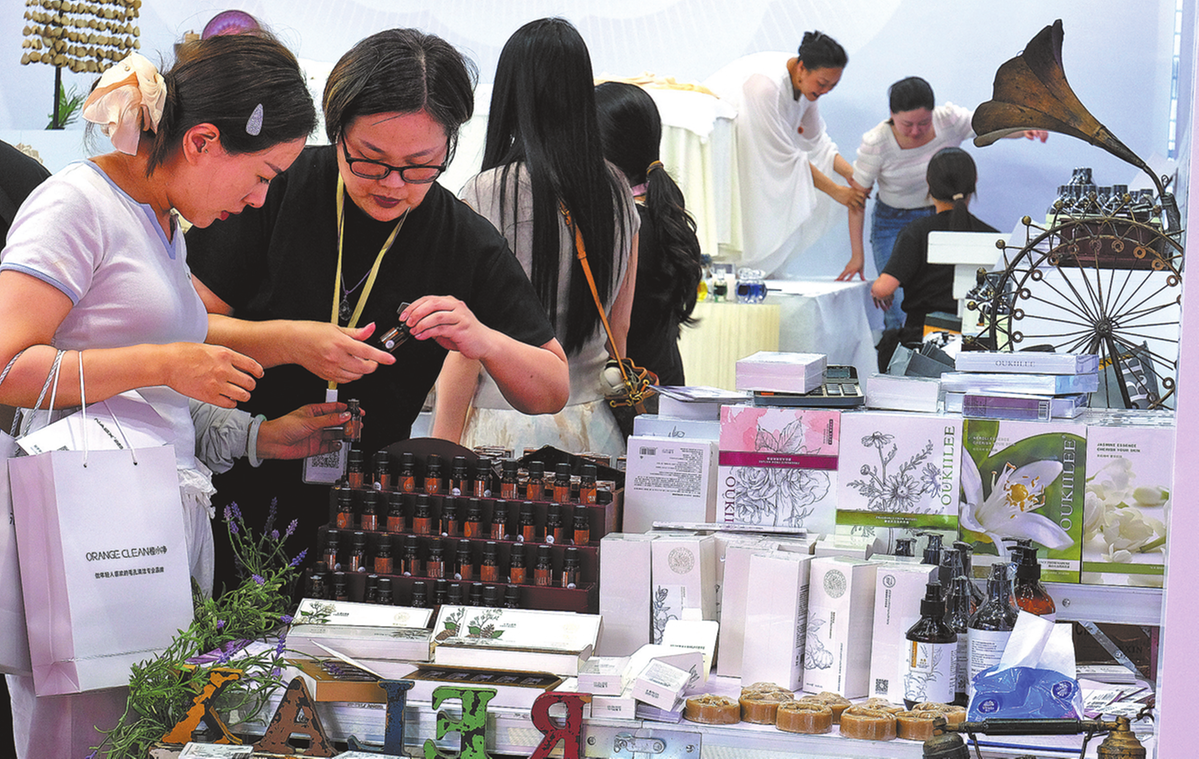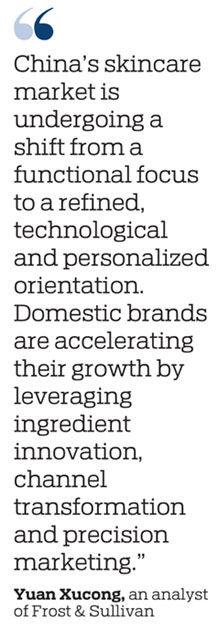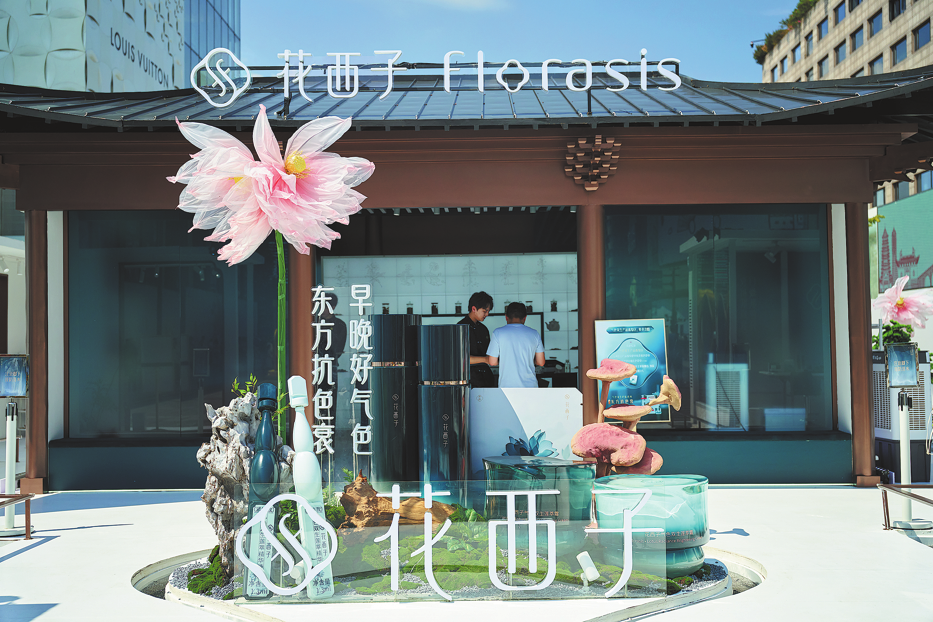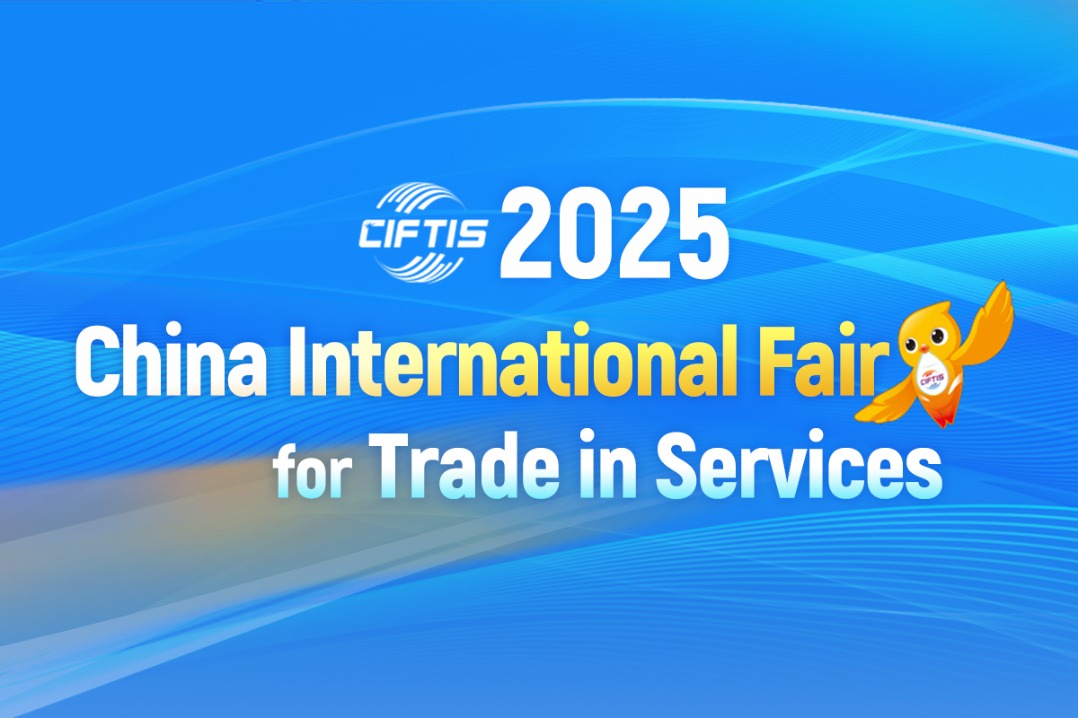Innovation key growth driver in skincare mkt
Uptrend expected to be driven by surging demand for sensitive-skincare, anti-aging options, growing popularity of men's products


Huaxizi, also known as Florasis, a Chinese beauty brand with cultural and aesthetic attributes, first introduced the company's skincare line in September, a move driven by growing demand for related products from consumers.
Last year, the transaction value of China's skincare market exceeded 420 billion yuan ($59.03 billion). While the figure declined slightly compared with 2023, the transaction value is expected to surpass 530 billion yuan by 2029, with a compound annual growth rate of 4.8 percent from 2024 to 2029, the consulting firm Frost & Sullivan has predicted.
This growth is expected to be driven by consumers' surging demand for sensitive-skincare and anti-aging products, as well as the growing popularity of men's skincare products, the consultancy said.
The Hangzhou, Zhejiang-based company has newly launched a range of skincare products via both online and offline channels, with products categories covering face creams, essences, toners, lotions and facial masks.
Leveraging the characteristics of Chinese consumers' skin and elements of Chinese culture, Florasis has developed technologies and products infused with distinct Chinese traits. The brand said this endeavor, driven by cultural confidence and technological innovation, allows it to convey the diversity of aesthetic culture to global consumers.
"Based on consumers' complexion concerns, the specific skincare demand of Asian women, and our research and development in relevant technologies over the past five years, we are confident in providing consumers with skincare solutions that enhance their skin complexion," said Li Huiliang, chief scientist of EastGarden Cosmetics Group, the parent company of Florasis.
In the Government Work Report delivered in March, boosting consumption was listed as a top priority among this year's major tasks.
In the first eight months of this year, total retail sales, a gauge of consumption, reached 32.39 trillion yuan, up 4.6 percent year-on-year. Specifically, the retail sales of goods reached 28.74 trillion yuan, growing 4.8 percent year-on-year, said the National Bureau of Statistics.
A new report by KPMG found that over the six-month period, China's healthcare and cosmetics market has demonstrated strong resilience and a clear positive growth trend. Younger consumers, particularly Generation Z (those born between the mid-1990s and the early 2000s), have gradually emerged as the main force driving the country's beauty product consumption.
KPMG noted that domestic companies have stepped up innovation in cosmetic ingredients, with a growing number actively engaging in the R&D of natural products featuring eco-friendly components. This shift aims to meet the demand of consumers who are increasingly embracing sustainable and healthy lifestyles.
Meanwhile, China's National Medical Products Administration issued a guideline earlier this year to support cosmetic ingredient innovation, encouraging industry players to develop cosmetics with more raw materials featuring Chinese characteristics.
Over the past few years, more domestic skincare brands have emerged rapidly in the market. According to Frost & Sullivan, leading industry players such as Proya, Kans and Winona collectively account for over 50 percent of the market share among domestic skincare brands.
Like many other industries, expanding research and development while embracing the application of innovative technologies has become important foundations on which Chinese beauty brands can enhance their international competitiveness.
"China's skincare market is undergoing a shift from a functional focus to a refined, technological and personalized orientation. Domestic brands are accelerating their growth by leveraging ingredient innovation, channel transformation and precision marketing," said Yuan Xucong, an analyst of Frost & Sullivan.
"Next, the integration of technology with artificial intelligence and biosynthesis, sustainable development and the exploration of diverse consumer demand will become the core drivers of industry growth," Yuan said.

Meanwhile, driven by the implementation of childcare subsidy policies, the ongoing trend of consumption upgrading and young parents' focus on refined parenting, skincare products for babies and toddlers in China hold significant growth potential.
Despite a declining birth rate, the per capita consumption value of related skincare products has continued to grow in China.
Parents born in the 1990s and 2000s have gradually become the primary consumer group for baby care products. They generally prioritize scientific and refined parenting, a trend that has driven greater diversification and segmentation in the baby and children's care products markets, industry insiders observed.
In the first five months of this year, online sales volumes of baby and children's care products reached 11.24 million units, down 4.3 percent year-on-year. In contrast, sales value jumped 25 percent to 880 million yuan on a yearly basis, a trend that reflects a higher proportion of high-priced products or stronger brand premiums, according to rihuayun.com, an online platform specializing in daily chemical industry research.
Frog Prince (China) Daily Chemicals Co Ltd, a company based in Zhangzhou, Fujian province, which mainly produces baby and children's skincare products alongside other categories, has continued to expand its business while upgrading the intelligence level of its production lines.
Now, the company has expanded its business to some 30 countries worldwide and established research and development centers in Zhangzhou, Shanghai, as well as Malaysia and Singapore.
On the high-speed production line at the company's washing and care products factory in Zhangzhou, 78 bottles can be automatically filled per minute. The production line is also equipped with a visual inspection system, and defective products can be automatically removed from the line, which effectively ensures product quality stability.
Today, safety stands as parents' top priority when purchasing baby and children's products, with natural ingredients and mild, non-irritating formulas having become key selling points of such items.
"When it comes to baby and children's skincare, parents now place greater emphasis on the products' natural, non-irritating ingredients and their professional quality. Notably, the skincare market for older children still has a significant gap waiting to be filled," said Xun Shujia, director of brand marketing at Frog Prince.
Data from Euromonitor International shows that between 2016 and 2021, the market size of China's baby and children's personal care products expanded from 17 billion yuan to 32 billion yuan, with an overall growth of 89 percent and a compound annual growth rate of 13.6 percent. This year, the market size is projected to achieve 50 billion yuan.
Besides, online channels are playing an increasingly important role in the sales of children's skincare products, with their share surging rapidly from 35 percent in 2020 to an estimated 65 percent in 2025. Among these channels, livestreaming sessions on e-commerce platforms have become a key driver of business growth, according to market consultancy QYResearch.

Today's Top News
- New policy targets EV exporters
- France's PM resigns after less than a month in office
- Chinese scientists discover colder lunar mantle on moon's far side
- Diplomatic window for peace in Gaza reopens
- Beijing, Dhaka to accelerate cooperation
- Japan braces for shift to conservatism






























